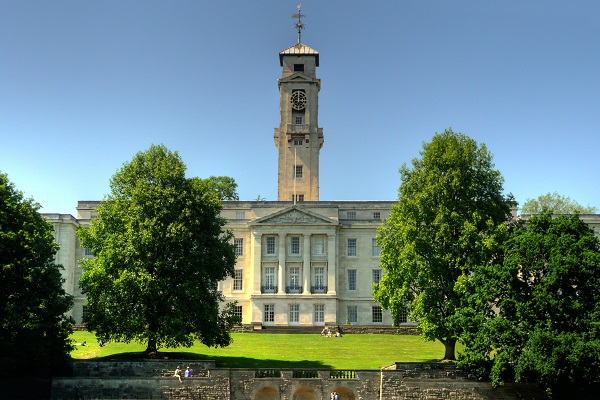University Of Nottingham: Ice Age animal bones and Neanderthal tools discovered at East Midlands heritage site are displayed for the first time
Animal bones and Ice Age human tools, ranging from 13,600 to 50,000-years old, have gone on display at the University of Nottingham Museum. The artefacts were discovered at Creswell Crags archeological park on the Derbyshire/Nottinghamshire border and they help us to understand what happened in Europe during the Ice Age.
‘Creswell’s First Collectors: Hyaenas, birds of prey, Neanderthals and early modern humans’ is a free exhibition, which tells the story of the Ice Age animals and humans who collected the items. The exhibits range from a Neanderthal hand axe to woolly mammoth and woolly rhinoceros teeth. Some of the objects have never been displayed before and the exhibition is, therefore, a unique opportunity for visitors to see these local artefacts for the very first time.
Creating this exhibition has been a fantastic opportunity to bring the story of Creswell Crags into Nottingham. The four ‘collectors’ featured in the exhibition were so important in understanding the animals, the environments, and human behaviour in Creswell Crags during the Ice Age. As a Curator, it’s brilliant to be able to reinterpret the Ice Age story in new ways, using items that are not usually on public display.
Dr Angharad Jones, Curator, Creswell Heritage Trust
Creswell Crags is a picturesque limestone gorge on the Nottinghamshire/Derbyshire border. It contains more than twenty caves and rock shelters, where archaeological and palaeontological material, mostly from the Ice Age, has been discovered. The material found at Creswell Crags amounts to tens of thousands of specimens and it forms part of the wider story of the Ice Age in Europe. The specimens help us to understand the behaviour of animals. It shows that spotted hyaenas made dens in caves and their diet included woolly rhinoceros and juvenile woolly mammoths. The exhibits also show how Neanderthals and early modern humans were living and surviving right here in the Midlands thousands of years ago; Neanderthals preyed upon reindeer, while early modern humans utilised wild horse and mountain hare.
It is wonderful to collaborate with Creswell Heritage Trust on this exhibition and to be able to display items not previously seen as well as discuss current interpretation. We also have a great programme of public events including talks and a free family drop in event, with lots of hands-on activities, on Saturday 11th February.
Dr Clare Pickersgill, Keeper of the University of Nottingham Museum
Mark a Mark! is a free family drop in event, on Saturday 11 February, 11am – 4pm run by Creswell Crags Heritage Facilitators at the University of Nottingham Museum. Have a go at engraving a Stone Age ‘bone’, create your own version of one of the oldest known spinning toys and dig in excavation boxes.
Paul Baker, Executive Director, Creswell Heritage Trust adds: “We’re very excited to be working with the University of Nottingham Museum on this exhibition. It is a great opportunity to share the important Ice Age story of Creswell Crags with new audiences.”
Visitors can see ‘Creswell’s First Collectors: Hyaenas, birds of prey, Neanderthals and early modern humans’ for free between 12-4pm each Thursday-Sunday until Sunday 2nd July. The University of Nottingham Museum is located at Lakeside Arts.

